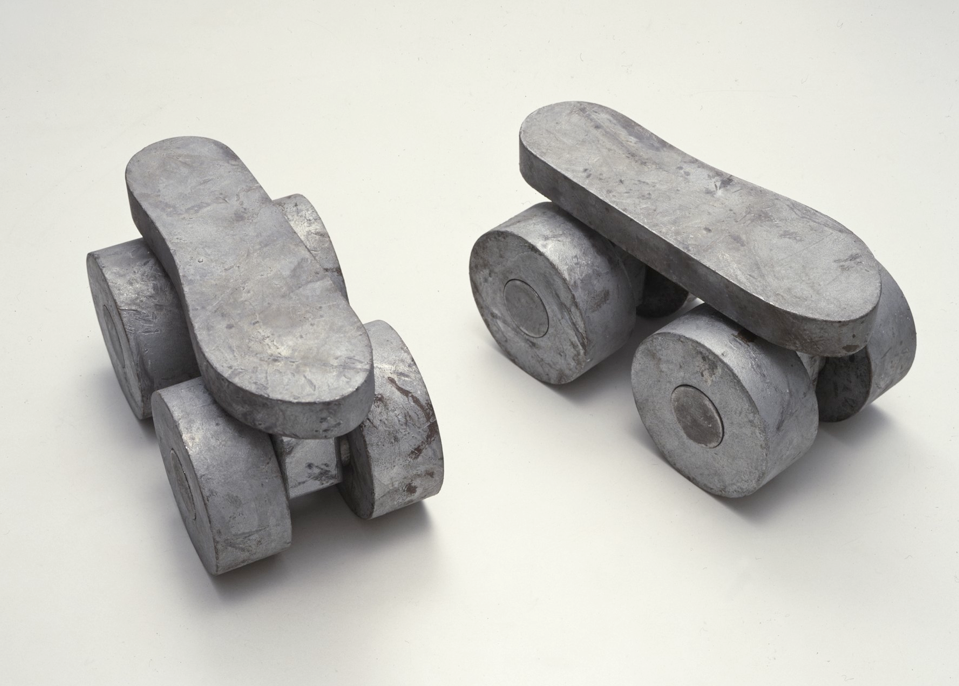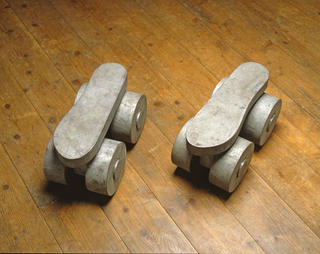The first installation in 1989 at Studio Marconi in Milan
With Roller Skates, Cavenago introduces an initial relationship with the human figure. The horizontal plate, shaped according to the shape of the human foot and placed on four wheels, invites a natural interaction on the part of the viewer, also suggested by the placement of the work on the floor.
The first installation of roller skates, realised in 1989 at Studio Marconi in Milan, comprised a dozen elements, all different from each other, modelled on the measurements of the human foot. The skates were installed scattered over the three floors of the gallery, arranged in pairs facing each other.
The individual elements, ready to be used to move in space, seemed to invite the public to experiment with movement on wheels. Apparently functional, the installation teased the visitors, unconsciously inviting them to a real test of interaction. The various elements also had a pedestal value because the absence of the human figure above them created a vacuum that solicited a 'compatibility test' with themselves. Although the whole thing was fiction and metaphor, the work turned many observers into real skate users. These, without hesitation, climbed on and off the works to test the potential their form declared. However, the slender structure of the skates, unable to withstand this natural interaction, collapsed, bending and deforming under the weight of the Art audience.


Social
Contatti
umberto@cavenago.info